Only two of the discoverers of the sandwich compounds that revolutionised organometallic chemistry received the Nobel prize, leaving one very big name feeling left out. Mike Sutton traces the controversy
Every autumn, the worldwide scientific community looks expectantly towards the Swedish city of Stockholm – and when the new Nobel prize-winners are finally announced, a debate often follows. Informed observers can generally point to other investigators whose work seems equally meritorious, but it is unusual for individuals to protest directly to the Nobel committee about their own exclusion from the list. Nevertheless, 50 years ago, someone overlooked for the 1973 chemistry Nobel prize did just this.
Alfred Nobel originally wanted his prizes to reward the most important advances of the current year, but it soon became clear that a few months’ consideration might be insufficient to evaluate a new discovery. Since then, the interval between discoveries and awards has lengthened, so that prizes are now often seen as rewards for a lifetime’s work. Meanwhile, the expansion of scientific research makes it ever more challenging for the judges to select (at most) three winners per year in each discipline. Inevitably, there are sometimes disappointments and disputes.
The 1973 chemistry prize went to Geoffrey Wilkinson and Ernst Fischer for their work on ‘on the chemistry of the organometallic, so called sandwich compounds’. For over 20 years, they (and the teams they headed) had investigated many intriguing new substances, but it was the accidental discovery of one remarkable compound which set them both on the road to Stockholm. The 1965 chemistry laureate Robert Woodward – who also played a part in identifying that compound – was not invited to share the award, and he complained to the Nobel committee that their decision was unfair. Opinions about the validity of his protest vary. But regardless of its personal dimension, the incident raises interesting issues.
The first discovery
The compound in question was first noticed in the 1940s by workers at Union Carbide in the US, when iron piping used in a hydrocarbon cracking process became clogged with a sticky yellow mass. They did not investigate it further. However, in 1950 three researchers at the British Oxygen Company’s London laboratory – Samuel Miller, John Tebboth and John Tremaine – also encountered it, while attempting to synthesise amines from alkenes and ammonia using an iron catalyst. When purified, this new substance was a remarkably stable orange solid. Analysis indicated the formula Fe(C5H5)2, and they proposed a linear molecular structure.
Their results were scheduled to appear in the Journal of the Chemical Society in February 1952, but the forthcoming paper’s title – ‘Di-cyclopentadienenyl Iron’ – was announced late in 1951. This immediately alerted Peter Pauson and Thomas Kealy at Duquesne University in Pittsburgh, US. They had accidentally prepared the same compound by adding ferric chloride to cyclopentadienyl magnesium bromide, while seeking a route to the synthesis of di-hydrofulvalene (C2H5 – C2H5). Pauson immediately wrote to Miller, Tebboth and Tremaine, endorsing their formula, and agreeing that the compound’s molecular structure was probably linear.
A brief note of Pauson and Kealey’s results then appeared in the 15 December 1951 issue of Nature, leap-frogging Miller, Tebboth and Tremaine’s as yet unpublished JCS article. This immediately brought the new substance to the attention of Woodward, Wilkinson and Fischer, who sprang upon it. All three mistrusted the proposed linear structure, and suspected that the compound might belong to a previously unknown chemical family.
Is it a sandwich?
To put these events into context, we need to look back a little further. Compounds between organic radicals and main group metals such as magnesium and zinc had long been known, and were routinely used in synthetic reactions. But before the 1950s, analogous compounds involving transition metals had proved very difficult to prepare, and were usually highly unstable. (A rare exception was the platinum salt discovered by Danish chemist William Zeise in 1830.) The new organo-iron compound, however, was unaffected by many common reagents, and melted without decomposition around 173°C. Physical evidence eventually confirmed the molecule’s unusual layout, but Woodward was one of the first – or the first as he believed – who predicted its structure, on purely theoretical grounds.
Woodward was a precocious student who gained his PhD from the Massachusetts Institute of Technology in 1937, aged only 20. By 1952 he was a professor at Harvard University, renowned for his expertise in organic synthesis. Wilkinson (born 1920) completed his doctorate in 1946 at Imperial College, London. After doing post-doctoral research at Berkeley and MIT, he became an assistant professor at Harvard in September 1951. Fischer (born 1918) earned his doctorate at Munich’s Technical University in 1952 becoming a professor there in 1957.
News of the synthesis had instigated a surge of activity at Harvard
All three attacked this promising line of research eagerly – still seeking, perhaps, to compensate for the disruption of their academic careers by world war two. During the conflict, Woodward had searched in vain for a viable method of mass-producing synthetic quinine (desperately needed in tropical combat zones), while Wilkinson had wrestled with chemical problems related to the atomic bomb project. Fischer had been conscripted on leaving high school in 1937 and remained a soldier until the war ended. Understandably, all three were keen to seize this new opportunity.
Fischer may have started with a slight advantage, since he had already investigated a substance in which carbon was bonded with a transition metal – nickel carbonyl, Ni(CO)4. After preparing di-cyclopentadienyl iron, he heated it with carbon monoxide, expecting to break down the molecule and produce iron penta-carbonyl. This effort failed – but he did succeed in bonding cyclopentadiene with cobalt and nickel, producing new compounds which closely resembled their iron analogue.
In collaboration with Wolfgang Pfab, Fischer then began x-ray crystallographic studies of these substances. The results, though not decisive, were certainly compatible with the ‘sandwich’ structure already proposed by Woodward and Wilkinson at Harvard. There, the news of Pauson and Kealey’s synthesis had instigated a surge of activity – though who was in charge of it seemed unclear at first.
Claiming the territory
Reminiscing about those early days in a 1975 article, Wilkinson recalled visiting his departmental library late one afternoon in January 1952. On reading Pauson and Kealy’s article in the latest issue of Nature, he immediately decided that their linear structure for the molecule must be wrong. After sketching two alternatives on a scrap of paper he went off to dinner, intending to pursue the matter next morning.
Woodward, however, was famous for working extremely long hours – and for expecting colleagues and students to do likewise. Having spotted the same Nature article, he immediately announced the discovery of di-cyclopentadienyl iron to one of his regular late-evening seminars for post-graduate students. Rejecting Pauson and Kealy’s linear structure, he sketched what later proved to be the correct ‘sandwich’ structure on the blackboard.
Woodward also encouraged PhD student Myron Rosenblum to pause his scheduled research and investigate the new substance. Furthermore, he suggested that other transition metals should form similar compounds – ruthenium seemed an obvious candidate, as it sits directly beneath iron in the periodic table. Next morning Rosenblum called at Wilkinson’s lab, asking if he had any ruthenium to spare.
Wilkinson immediately guessed the reason for this request and was seriously displeased that Woodward had not approached him directly. But the following Monday – over lunch at Harvard’s Faculty Club – Wilkinson and Woodward agreed to tackle the project together, assisted by Rosenblum and one of Woodward’s post-doctoral researchers, Mark Whiting. Several weeks later, a paper listing all four as co-authors appeared in the Journal of the American Chemical Society. At Whiting’s suggestion, they called the new substance ‘ferrocene’, highlighting its similarities with benzene and other aromatic substances.
Wilkinson received ‘the ominous news that someone else was in the game’
Although the editor of the journal accepted this paper for publication, in a private letter to Woodward he expressed scepticism about the proposed sandwich structure, writing ‘I cannot help feeling you must have been at the hashish again’. The four co-authors had produced some physical evidence which told against the linear structure – the molecule’s dipole moment was effectively zero, and its infra-red absorption spectrum displayed only one carbon–hydrogen stretching frequency. But thus far, they had been unable to persuade any x-ray crystallographers to investigate the new substance.
Meanwhile, Wilkinson retained his ruthenium. And a few weeks later, a paper on ‘The Preparation and Some of the Properties of Ruthenocene and Ruthenicenium Salts’ appeared in the same journal – under his name alone. Making personal claims for territory (and priority) was already becoming an issue in this rapidly developing endeavour – and on returning to Harvard after the 1952 summer vacation, Wilkinson received ‘…the ominous news that someone else I had never heard of, was in the game.’ This new competitor was Fischer – and although he and Wilkinson eventually negotiated a division of the field between their respective teams, territorial disputes still flared up from time to time.
The proof is in the structure
At this point, it is relevant to note that both Woodward and Wilkinson were profoundly influenced by Linus Pauling’s classic study, The Nature of the Chemical Bond. Having absorbed Pauling’s quantum-mechanical account of the hybridized bonding in aromatic molecules, they thought that di-cyclopentadienyl iron’s remarkable stability must arise from an aromatic molecular structure, in which all the carbon–carbon bonds are equivalent. The problem, however, was proving this conclusively.
Wilkinson’s 1975 reminiscences reveal that his ideas about this molecule were also affected by another chance encounter. On arrival at Harvard in 1951 he had been tasked with teaching inorganic chemistry. Having lost touch with the field during his years working on nuclear chemistry, he struggled ‘to keep at least one lecture ahead of the students’. But while revisiting some advanced textbooks, he was reminded of the anomalously stable hydrocarbon-transition metal compound known as Zeise’s salt. Although its formula was known to be K[PtCl3(C2H4)] H2O, its spatial structure remained uncertain. Wilkinson, however, was ‘quite convinced that the ethylene must be bound sideways to platinum’.
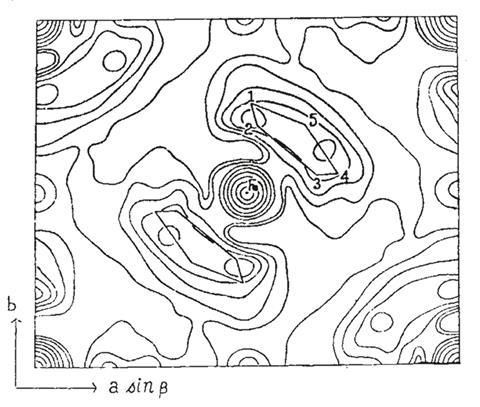
The concept of an alkene carbon–carbon double bond sharing electrons with a transition-metal atom to form a stable complex suggested an obvious parallel with ferrocene and its analogues. And in his 1952 ruthenocene paper, Wilkinson further noted that the 10 electrons needed to expand the outermost electron shell of an atom of iron (or ruthenium, or osmium) to the configuration of the next noble gas in the periodic table could be supplied by complexing with the p-electrons from a pair of aromatic C5H5− ligands. This neatly explained the remarkable stability of ferrocene-like compounds.
Soon afterwards, conclusive proof of ferrocene’s structure came from Oxford, where an innovative team of x-ray crystallographers had gathered around the future Nobel laureate Dorothy Crowfoot Hodgkin. When Jack Dunitz and Leslie Orgel first saw the paper by Woodward, Wilkinson, Rosenblum and Whiting they mistrusted its claims. But when they subjected ferrocene to state-of-the-art x-ray analysis, the results – submitted to Nature in June 1952, and published in January 1953 – confirmed the sandwich structure. The first chapter of the ferrocene story was now complete.
Credit conundrum
Over the years, many more metallocene compounds were synthesised, and Fischer and Wilkinson (assisted by numerous research students and associates) assembled a formidable body of data on them. However, the search for practical applications of these fascinating molecules has so far produced relatively few significant breakthroughs. More effective catalysts for various polymerisation reactions – or a lead-free anti-knock fuel additive for vintage automobiles – seem less exciting than the new possibilities offered by graphene, for example.
But while Wilkinson and Fischer continued (sometimes disputatiously) to explore this new field, Woodward apparently took little further interest in it. Supported by a team of doctoral and post-doctoral students, he continued his strenuous pursuit of ever more ambitious organic syntheses. And in 1965, his work (including his crucial contribution towards the complete synthesis of vitamin B12) eventually earned him the chemistry Nobel prize for ‘his outstanding achievements in the art of organic synthesis’.
Thereafter, in collaboration with Roald Hoffmann, he developed and published the Woodward–Hoffmann rules for predicting the outcomes of previously untried synthetic reactions. For this work, Hoffmann received the 1981 Nobel chemistry award – shared with Kenichi Fukui, who had independently explored similar predictive procedures. Woodward, however, had died in 1979, and Nobel prizes are only given posthumously if a winner dies between the announcement of their award and its presentation.
Fischer and Wilkinson were not honoured merely for identifying a single substance, but for two decades’ intensive study
Had he lived a few years longer, Woodward would almost certainly have received the second Nobel medal which he clearly desired and few would deny he merited. Nevertheless, by 1973 his place in history was already secure, and protesting that he deserved a share of that year’s prize may well have seemed undignified to his contemporaries. However, we should remember that Woodward was an intensely dedicated investigator, who worked extraordinarily long hours and rarely took holidays (both his marriages ended in divorce, and he died before reaching retirement age). Pushing ahead with research – and gaining full recognition for it – was clearly his ruling passion.
Today, the importance of Woodward’s role in the ferrocene drama remains debatable. It is possible that his confident assertion of the breakthrough’s significance – along with his high standing in the profession – smoothed the discovery’s pathway to general acceptance. Meanwhile, Wilkinson’s determination not to be overshadowed or sidelined by his more famous colleague probably added impetus to his own attack on the problem. Nevertheless, it seems likely that Wilkinson and Fischer would still have achieved their successes without Woodward’s involvement.
More importantly, Fischer and Wilkinson were not honoured merely for identifying a single substance, but for two decades’ intensive study of many novel molecules. And so, with the benefit of hindsight, Woodward’s protest – though understandable – seems excessive. Since the minutes of Nobel awards panels are normally released after 50 years, we may soon learn whether the 1973 judges excluded Woodward following serious deliberation, or through an unfortunate oversight. But in either case, his status as one of the giants of modern chemistry is unlikely to be diminished by any revelation.
Mike Sutton is a historian of science based in Newcastle, UK
Updated 09 October 2023 to correct the spelling of Roald Hoffmann’s name

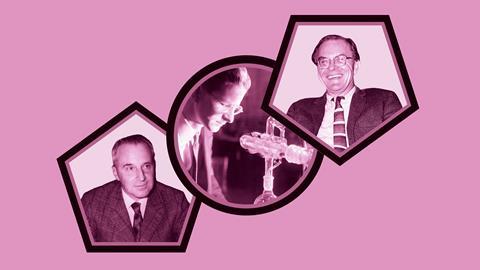





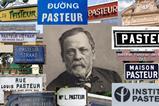
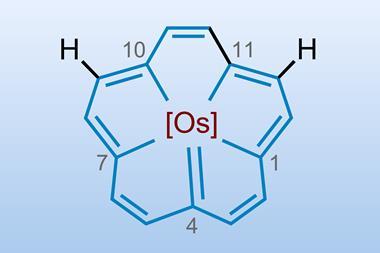
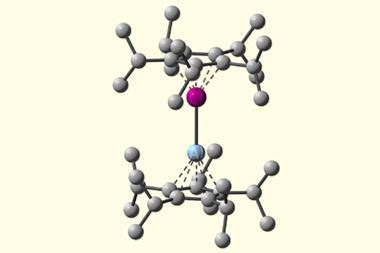
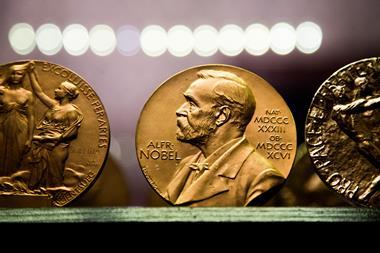









No comments yet